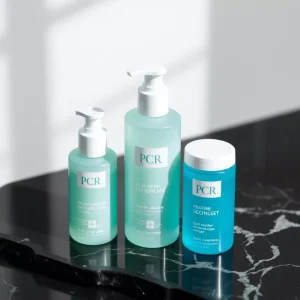Was ist PCR-Kunststoff?
Inhalt Menü
● Challenges Facing PCR Plastic
In recent years, the conversation around sustainability has intensified, particularly in the realm of packaging and materials. One term that has gained traction is PCR plastic, which stands for Post-Consumer Recycled plastic. This article will delve into what PCR plastic is, its benefits, applications, and the challenges it faces in the market.
Was ist PCR-Kunststoff?
PCR plastic is derived from recycled materials that have been used by consumers and then discarded. This includes items like plastic bottles, containers, and other packaging materials. The recycling process involves collecting these plastics, cleaning them, and then processing them into new products. The primary goal of using PCR plastic is to reduce the amount of waste that ends up in landfills and to minimize the reliance on virgin plastic, which is derived from fossil fuels.The production of PCR plastic not only helps in reducing plastic waste but also conserves energy and resources. For instance, using recycled materials typically requires less energy compared to producing new plastic from raw materials. This results in lower greenhouse gas emissions, making PCR plastic a more environmentally friendly option.
Benefits of PCR Plastic
- Environmental Impact: One of the most significant advantages of PCR plastic is its positive impact on the environment. By recycling existing plastics, we can significantly reduce the amount of waste that ends up in landfills and oceans. This helps in mitigating pollution and protecting wildlife.
- Resource Conservation: The production of PCR plastic conserves natural resources. It reduces the need for new raw materials, which in turn decreases the environmental degradation associated with extracting and processing these materials.
- Energy Efficiency: The energy required to produce PCR plastic is generally lower than that needed for virgin plastic. This reduction in energy consumption translates to fewer carbon emissions, contributing to a decrease in global warming.
- Consumer Demand: As consumers become more environmentally conscious, there is a growing demand for sustainable products. Companies that utilize PCR plastic can appeal to this demographic, enhancing their brand image and customer loyalty.
- Versatility: PCR plastic can be used in a variety of applications, from packaging for food and beverages to consumer goods and industrial products. This versatility makes it an attractive option for manufacturers looking to adopt sustainable practices.
Applications of PCR Plastic
PCR plastic is increasingly being used across various industries. Here are some notable applications:
- Packaging: Many companies are now using PCR plastic for packaging products, including food and beverages. This not only helps in reducing waste but also meets consumer demand for sustainable packaging solutions.
- Cosmetics and Personal Care: The beauty industry has also embraced PCR plastic, with many brands opting for recycled materials for their product containers. This shift not only reduces environmental impact but also aligns with the values of eco-conscious consumers.
- Electronics: Some electronics manufacturers are incorporating PCR plastic into their products, such as casings and components, to reduce their carbon footprint.
- Fashion: The fashion industry is exploring the use of PCR plastic in clothing and accessories, particularly in the production of synthetic fibers and materials.

Challenges Facing PCR Plastic
Despite its many benefits, PCR plastic is not without challenges. Some of the key issues include:
- Quality and Performance: One of the main concerns with PCR plastic is the quality and performance compared to virgin plastic. In some cases, recycled materials may not meet the same standards, which can limit their use in certain applications.
- Color Limitations: PCR plastic often has limitations in terms of color and appearance. This can be a drawback for brands that prioritize aesthetics in their packaging.
- Food Safety Regulations: There are strict regulations regarding the use of recycled materials in food packaging. Many types of PCR plastic cannot be used for food contact applications due to safety concerns.
- Market Availability: The availability of high-quality PCR plastic can be inconsistent, which may pose challenges for manufacturers looking to incorporate it into their products.
- Consumer Awareness: While awareness of PCR plastic is growing, there is still a need for education around its benefits and applications. Many consumers may not fully understand what PCR plastic is or how it contributes to sustainability.

Conclusion
PCR plastic represents a significant step forward in the quest for sustainable materials. By utilizing recycled plastics, we can reduce waste, conserve resources, and lower our carbon footprint. As technology advances and consumer demand for sustainable products continues to rise, the use of PCR plastic is likely to expand across various industries.While challenges remain, the benefits of PCR plastic make it a compelling option for manufacturers and consumers alike. By choosing products made from PCR plastic, we can all play a part in creating a more sustainable future.In summary, PCR plastic is not just a trend; it is a crucial component of a sustainable approach to manufacturing and consumption. As we move forward, embracing materials like PCR plastic will be essential in addressing the environmental challenges we face today.
